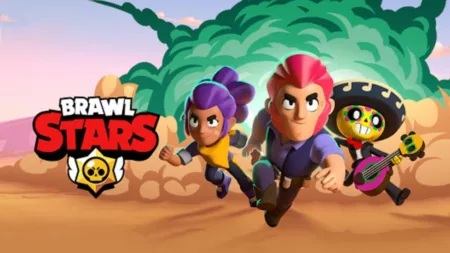Let’s get straight to the point here: the world is a heavily connected place and if you’re business is an online nature, losing that connection will most likely result in loss of business for the duration of your downtime. During my time in corporate IT back in 2011, I wrote a paper to our company citing that we needed multiple carriers for business contingency. This was at a time where dual-ISP carriers or dual-WAN basically was a luxury for most companies. We were paying close to $900 (Php45,000) for a leased-line connection bridging two branches and each branch has their $50 (Php2,500) connection plan. The idea was that if ever one site went down, the leased-line bridging the two branches will allow us to send Internet access via proxy server to the downed branch. This required sizable investment in equipment as well as the monthly subscription. Still, this wasn’t perfect. The leased line network would occasionally go down at the carrier level as well the ISPs for the Internet.
All of this was back in 2008-2013 where FTTH (fiber-to-the-home) or more properly FTTP (fiber-to-the-premises) was still a luxury (3Mbps for $1000). Due to relocation, I was forced to drop back to DSL for our main branch relocation from 3Mbps FTTH.
With DSL plans getting better those days, I thought why not ditch the leased line and bridge branches via a secondary DSL sub? This never really materialized but the paper went through details on how to do this as well basically just being an answer to our business contingency strategy with the network in mind.
A Modern Era
Let’s forward to modern day 2019 where business operate from Facebook online stores to multi-million dollar IaaS (Infrastucture-as-a-Service) where connectivity is a requirement. And since we’re a gaming site, we’ll include the booming streaming market which is predominantly why I wrote this article in the first place. The level of dependency varies for many business: online stores operating with their own e-commerce platforms can continue to take in orders until the operator can be connected again. Facebook business owners can do that just as well or just operate from their phones via data connection. But it is with the growing work-from-home (WFH) workforce, online freelance worker or streamers (video game primarily) that I am addressing this piece. Most businesses of today have moved on from my struggles back in the early decade and are treating multiple carriers as a need rather than a luxury from my days in IT.
Many SMEs still avoid the expense of going dual-ISPs for whatever their reasons are but with 25Mbps connections available for $40 (Php1899 mostly) there is just no excuses not to do it unless you’re a non-connected business e.g. a steel mill or a coal mine. Just know I feel your pain, one-man IT guys working in these companies.
Why Multiple ISPs?
So why do you need multiple internet providers? Ultimately, the answer to this falls down to you. Depending on your level of dependency to the internet and how much your job requires it, you can forego this option ultimately or go for some semblance of it. We’ll go through in-detail later on but we’ll assume you are those we deem heavily dependent and your work hinges on your ISP.
Basically, natural disasters or regional-level outage are the only possible causes that may disrupt services from two separate ISPs. If we say your PLDT connection goes down, there is little to no chance that Converge or Globe will go down along with it. Consumer internet subscriptions do not have SLA (service-level agreement) which indicates what their promised service terms are e.g. they guarantee at most a 3-hour downtime every month or so-on and so-forth. Nope, you get zero. None.
People who keep berating and bashing ISPs online fail to see this and ISPs usually appease them for the most part after a prompt reply. They will be given support tickets, but will never receive a response that means they’ll work on it right at the second the ISP is alerted.
At its most basic, the purpose of having multiple internet subscription is to keep you online continuously.
So does your job/business require multiple ISPs?
As I mentioned, this depends on your level of requirement. So lets break this down in further detail. I’ll focus this more on work-from-home individuals, home-based freelancers and content creators / streamers.
Work-From-Home Employees
Let’s focus first on the home-based work force. Since most of you are on a payroll, this situation is dictated by how your company manages your online presence. Work-from-Home (WFH) employees can range from data-entry staff, support staff to service staff that more client-facing. Most companies that grant this arrangement with employees may have set guidelines which dictates how to deal if and when an employee is online. For mission-critical situations, an employee may be called in for work in the office if they’re offline. For remote employees, this may have them go to a co-working space. Basically, the company acknowledges that the employee has certain provisions that will allow them to continue working in the WFH arrangement provided they have the means to do. This may vary from company to company. Provisions may also be different for pregnant WFH employees. In this situations, the employee must be well aware of the conditions the company mandates.
If the company requires that a work-from-home employee be 97% available during the WFH session, this means that an employee can only have 45 minutes of downtime, not counting break period.
To summarize, if you and your employer have terms governing being offline, you should be fine. If not, if your work presence is highly demanded and you are royally paid to do so, then I suggest multiple ISPs. Consulting with your employer regarding this is the best course of action.
Very distinct cases of WFH employees needing two connections are language instructors who have schedules to maintain. Theirs jobs will usually require them to plot out weekly sessions with students who have made themselves available during that time. Should the instructor not be available due to any reason including disconnection, they will be required to explain aside from pay deductions as well as getting lower ratings from students which will hurt their chances of getting more students in the future. Lower ratings may lead to termination from the platform. These kinds of services are mostly online and the employer platform don’t put much care on how their instructors conduct their sessions as long as they are present.
Home-Based Freelancer
Upwork, Fiverr and a lot of other portals have opened up numerous job opportunities for a lot of people and have helped carved a significant industry of their own. This portals range from skill-based opportunities to virtual assistants, etc. There is a wide scope of needs to cover here but basically for the most part, for creative and multimedia freelancers, they are results-oriented and only need to submit their work on the agreed deadline. For virtual assistants and other freelance work that need constant online presence, this gets a bit hairy. Some clients can be very unreasonable if you disconnect from your sessions. Other may be a bit nicer. Still, if you get feedback that you tend to disconnect during your service session, you may receive lower ratings which may lead to less people hiring you. Having a back-up plan is vital in these situations especially if you are maintaining a very high rating and thus also charging a very high price at it.
Content Creators / Streamers
The reason I wrote this article is primarily for video game streamers. I am bombarded on a daily basis by video game streams and I am are very aware of what goes on in the industry. For the sake of simplicity, I am grouping content creators and streamers together although content creators need not be streamers and vice versa. Youtuber content creators that don’t need to stick to a tight daily schedule really don’t need this but I’ll list some reasons in a bit. For the most part, we’ll point out similarities with streamers as we go on.
As of this moment, we have a large group of people that basically play video games for an audience. Some of these people are being paid by Facebook or another entity to stream for them. In the case of very popular ones, some of them may be sponsored as well, thus receiving compensation for branding in their streams. This is what the video game streaming market looks like in the Philippines.
For independent streamers, they may or may not have agreed streaming durations but the majority of signed, partner streamers are contractually obligated to deliver certain amounts in hours worth of streams monthly. This actually puts them on the highest tier of dependency on online connection versus everyone else in this article aside maybe from virtual assistants and online instructors.
That being said, the main caveat here is that they need to be online. Some streamer contract clause will dictate the minimum accounted hours before streaming time is deemed rendered and thus deducted from the total quota of the month.
With a few exceptions, the situation with streamers is by default they are influencers or market themselves as such. I have seen countless times how entitled some of these people can get by criticizing their ISPs, reasoning out that streaming or being online is their job and that the ISP is ruining that because they have crappy service. The same goes for the WFH and freelancers, but the difference is that, with a few exceptions, some of these streamers command a sizable following and thus influence people in a way unbecoming of a professional.
That being said, ISPs are not perfect themselves and the experience will range from good to horrible. Its never perfect.
Going back, streamers may also border being content creators but since uploaded content can be delayed, this sits back in the priority list. There are a few instances wherein streamer/content creator may be in a contractual agreement with a brand that may require them to upload certain projects in pre-agreed time. Again, this varies by agreement but being late may hurt your reputation. Content creators who have made it their full-time work are now also subject to the freelancer situation. We, too here are the same in Back2Gaming with B2G being a registered business who deal with contracts mostly asking us to create content for brands as well as posting news and reviews in our website. Other bloggers may be at this level or at least some are balancing freelance work with their blogging/content creation.
And those are basically your groups of people that are online dependent. Next we move on to cost.
What Does this Cost Me?
In the beginning of this article I mentioned some of the rates we had to work with back in the days. 2Mbps connection for $50 (Php3000) is high-end back in those days and we also had to lease a network connection between two branches for $900 (45,000).

Today, with fiber connections allows bandwidth of 50Mbps for Php2899 ($55) or more, there’s literally no reason no to spend a bit more if your investment or career depends on it. For the consumer side, let’s take a look at the bigger providers meaning PLDT/Smart and Globe as well as Converge where covered.
At the very least, most of these jobs we listed above have a minimum of 3Mbps symmetric connection requirement. That means at least 3mbps download, 3mbps upload. For streamers, we’ll change this but for online instructors and virtual assistants and those not requiring working with large multimedia files, 3mbps is optimal. That said, the minimum most ISPs right now are offering is 5mbps which is good and the price also ranges from Php999 to 1699. This will be mostly focused in Manila so I apologize in advance for people in other regions. We’ll also drop the dollar conversions for easier reference.

As you can see, rates have really improved since 2011 with most of these plans much more ideal rates. One thing I didn’t mention earlier is that both Php3000 2mbps subs from my past work at also basic, residential subscription. The reason I also used USD is that some of these people do earn in USD.
Moving on, we now have the rates of the minimum connection we want for virtual assistants, online instructors and WFH employees. Lets ramp it up to 25mbps for streamers:
Here we have the plans for mid-range connections. We’ll avoid price comparisons between plans for now but take note that Globe does not have a 25Mbps fiber plan at the moment and Sky only has a 20mbps fiber plan. We’ve included both Globe DSL plan and fiber plans for this price comparison as well as both of Sky’s.
Again, this article isn’t here to show you the best deal, its to show you what its gonna cost you. So what we have right now are baseline plans for popular ISPs. We chose to only prioritize fiber connections due to the reliability of the service. If you are an online-dependent professional and is still on DSL/wireless, we highly advise to reconsider upgrading your primary line first.
Going back, a range of around Php2000 for a 25Mbps line and around Php1500 for a 5mbps line. For WFH employees, again please consult your employers about your terms. If they’re paying you enough to compensate for two lines, by all means make them pay for it.
For home-based freelancers and streamers, here’s the logic here. How much do you lose if your Internet goes down? Tenured virtual assistants average about 200Php per hour and work on average of 8 hours a day. Those starting out will usually run around Php5.00 an hour but again, we are making this article on that already have a decent living on these industries so we’ll go with average. With the numbers we have, an average virtual assistant makes around Php1600 a day. That is nearly the price of a month’s internet connection. Dropping it down to Php30,000 to make it easier for us to compare with a more general salary.
Let’s compute for operating expense shall we. First we compute power draw for our work computer. We have countless articles covering power draw and how to compute it, we’ll present the formula again below. We’ll add in power draw for the modems/routers as well as monitors. We’ll also include the internet bill. For an online professional, that’s pretty much all the expenses you have to take care off.
Formula for power draw cost:
((Watts Consumed / 1000) x Elec. Rate per kW) x Hours used
First we compute for the PC consumption which will vary greatly. An entry level PC from 3 years ago with moderate specs will average around 200-300w power draw. We’ll assume 300w. Combine this with the monitor’s 25w peak consumption and we have 325w average PC consumption. Since we’ll only compute for work time, we’ll separate this from modem/router consumption. A modem will average around 9w to 15w, we’ll just say 10w and this will run non-stop for the whole month.
And here we have our operating expenses for our equipment:
- PC Power consumption with Monitor: 325w
- Modem power draw (non-stop): 10w
We now compute for 8-hours and 22 days for the PC and 24 hours and 30 days for the modem and we get with Meralco rate of Php11 per kW/hr :
- PC expense (work hours)_: Php629.72
- Modem (non-stop): Php79.2
We get a total of Php708 for our operating expense.
Totally our expenses with both power and internet subscription using PLDT’s 5mbps plan 1299 as basis, we get an operating expense of Php1685. Let’s take out of our computed salary:
Assuming this is still more than you need monthly OR you make more than this, you can go for a backup line. Here we have my ideal combo which is PLDT and Converge, since Converge has a 25mbps line as their lowest at Php1500, we’ll use that and we’ll factor in power cost for the modem as well.
As you can see, we’re consuming 12% of our monthly estimated salary with this combo. Still, with another line we get 100% guarantee that we’ll be up and online at anytime save for power outages.
Now let’s get on a more extreme case for streamers: 2 PCs , 1 for gaming 1 for streaming and 2 mid-range lines. We’ll PLDT and Converge again and for PC specs we’ll use two 3rd-gen Ryzen 5 + RTX 2060 and we’ll use their maximum 80 hours instead of a calendar month for the duration.
Here we have the cost of a Converge 75MBps Plan 2500 line and a PLDT plan 2899 line plus the power draw of two gaming PCs. Most streamers never disclose their salaries and out of respect, we’ll stick the Php30,000 payout that VA receive.
Conclusion
At the end of the day, if every peso has to count and you are literally using everything for life then you are not obligated to follow this suggestion. Still, as a good businessman, you are responsible for your actions and while we can all hope for the best, I’ve been trained to expect the worst and what I’m sharing with you is a fundamental basic of business and as your primary source of income, it should be handled accordingly. While we can all hope and pray that ISPs be better, we really just can’t predict when things will go wrong and for that reason, having a back-up line is the same as having a spare tire for a delivery truck. It saves time, money (because you font get pay deductions) and ultimately energy that you don’t have to spend on figuring out what you can do while your internet is down.
If you think the backup line is not doing is not gonna do anything until you have an outage, you can dedicate it for the rest of the household so you have your main line to yourself. This also removes the possibility of traffic congestion as it removes the need to share your network with others when you don’t need it. Still, think of it as an insurance policy.
This article has been long as it is and we’ll talk about more details in setting up dual ISPs in the future and how you can maximize a dual ISP setup if and should you get it. We appreciate you taking the time in reading this article and if you have any questions or suggestions, kindly leave a comment.











